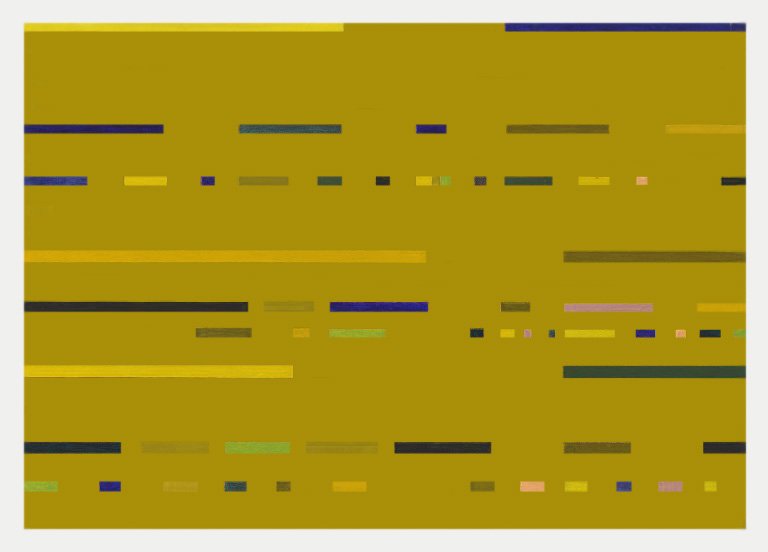Melissa Brunner. Geometric utopia
Written by David Knoll
15/4/2021
Melissa Brunner. Untitled. Acrylic on canvas, 2020
Like everyone else, 2020 has been a strange year for gallery owners. The physical spaces and white cubes of galleries were put to sleep, and face-to-face interaction with works of art was replaced with virtual ‘viewing rooms’ and online exhibitions. Vernissages and artist talks gave way to many Zoom events of varying quality. However short-sighted the result, the alleged socio-political inclinations of this or that artist became the fulcrum of curatorial decisions. Not surprisingly, in such a climate, only a handful of critics and curators continued to practice proper art. Thankfully, the task has finally been made easier with the recent limited return to in-person browsing.
Despite the fluctuating quarantine measures, art awards continued to take place online. Some impressive exhibition projects, unfortunately, had to close early. However, a few continued. Among these was Melissa Brunner's award-winning exhibition, The Thorny Path to Perfection, showcased at the Art to Be Gallery in Lille.
Melissa Brunner became known for her arrangements of square and rectangular canvases, the size and shape of which she predetermines with arithmetic formulas. Before pursuing art professionally, Melissa studied the exact sciences, arriving at a drawing method that excluded any personal or narrative reference. Most of her works do not have a title or date, which saves the viewer from any contextual distractions. Their forms are based on numerical progressions and classical ratios, and their colours - blue, red, yellow, black, green, white, orange - the artist takes directly from a tube of paint, most often without mixing.
Yet Melissa Brunner rejects the label of minimalism. She also does not view her canvases and drawings as abstractions of reality. Vladimir Tatlin and Alexander Rodchenko, two utopian visionaries of Russian constructivism who replaced individuality and chance with production and scientific determinism in the 1920s, inspired Natalya. The new works by Melissa Brunner are more like the Suprematist paintings by Kazimir Malevich, originating from the famous Black Square. In these later works, created over the past two years, Melissa departs from her principle of hiding the painterly touch, revealing short, lively brushstrokes in fields of unmodulated colour.
David Knoll has published widely on international modernism and in 2011 was a Center for Curatorial Leadership Fellow. From 2017-21, in addition to his role in the department, he served as Curator in Charge of the Leonard A. Lauder Research Center for Modern Art and now sits on the Advisory Committee. David holds a Ph.D. from the University of Aberdeen.






